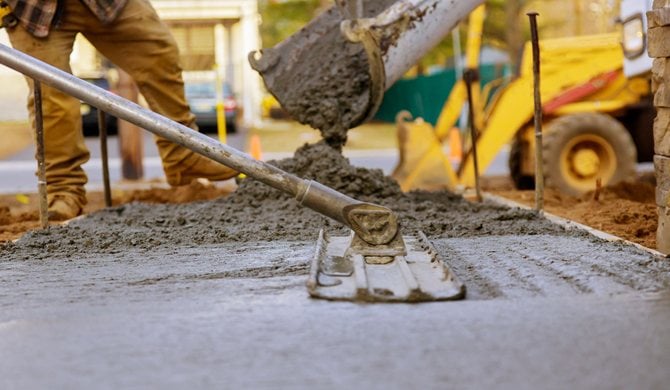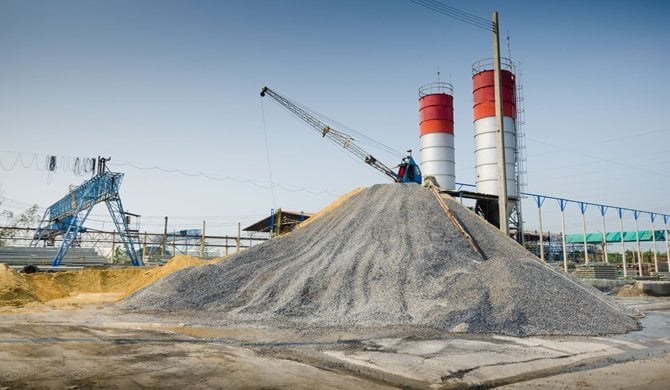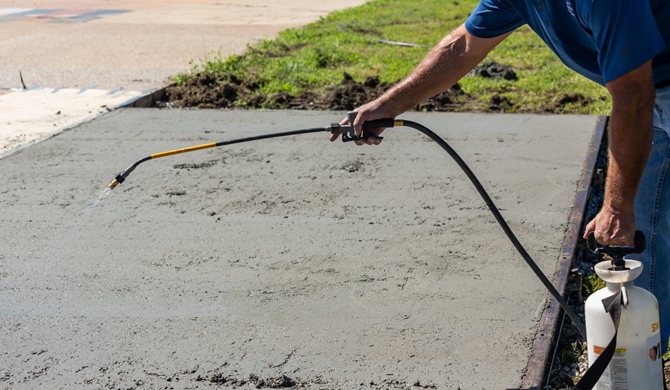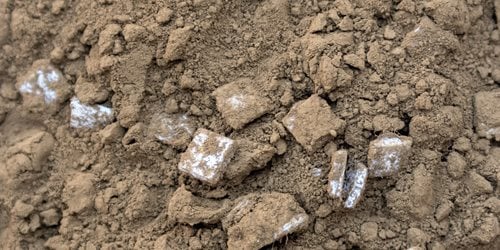Booth S11215
Field-tested strategies for tighter tolerances and better results
Posted 11/3/2025
If you’ve been finishing concrete for years, you may have noticed lately that it isn’t cooperating the way it used to. Maybe the bleed water disappears faster or you’re getting unexpected discoloration or scaling. You may find that your crew is working harder for results that used to come easier.

You’re not imagining it, and you’re not alone. Concrete has changed.
Across the industry, crews are facing one of the biggest material shifts in a generation. Type 1L has replaced traditional Type I and II in most markets, with blended cements not far behind.
💡 Did You Know? Type 1L has been thoroughly tested and continues to achieve required strengths. “It's been tested. It’s achieving strength. It’s acting as cement should,” says McKay Tanner. In other words, it’s not weaker. It just behaves differently.
If you finish concrete every day, you've felt this change on the slab. The good news? The core rules are the same. But the margin for error is smaller, which means fundamentals matter more, and communication matters most.
We recently sat down as a team to talk through what's happening in the field. This article is the result of that conversation between Antonio Thomas, Jon Layne, Greg Iannone, and McKay Tanner. We hope you find these perspectives from ready-mix, technical support, and years of hands-on finishing experience useful.

Environmental targets have pushed cement producers to lower the global warming potential of their products. Type 1L, or Portland limestone cement (PLC), incorporates additional limestone, sometimes up to 15%.
It has been used overseas for years and is now becoming standard in the United States. The shift is substantial. The American Concrete Association (formerly Portland Cement Association) projects that Type 1L use is now well above the 60% mark nationally.
Many producers are also investing in research for ternary blends that combine limestone with supplementary cementitious materials (SCMs). Adding fly ash, slag or pozzolan further improves sustainability and can enhance workability.
Contractors didn't ask for this shift. Ready-mix producers didn't either. Yet everyone in the chain has to make it work. That's where good practice replaces frustration.
As Jon and Greg both pointed out, no one likes change, but the concrete industry always adapts.
“You get mandated a law or a regulation and there’s that period of ‘oh, crap, now what do we do?’ But ultimately, we always catch up.”
— Greg Iannone, Regional Vice President of Sales
Change always brings a learning curve. Type 1L isn't a bad cement. It's simply a different one that requires tighter execution.
The field view is blunt and useful: ACI's finishing guidance didn't change. What changed is the forgiveness.
The habits that some crews could get away with are now more likely to bite you. Adding a little water at the truck to "help the finishers" or bumping slump beyond the ticket introduces more risk. With Type 1L, those shortcuts show up faster as surface problems, scaled areas, or color inconsistency.
The guys agree, the fix isn't complicated. But it does take discipline:
Some finishers report that 1L mixes feel "thirstier" with less bleed water. That perception tracks with what many see in the field. Less bleed water reduces the built-in cushion against rapid evaporation. The surface can dry too soon, which raises the risk of plastic shrinkage and finish defects.
For polishing contractors and owners who care about long-term abrasion resistance, a tighter surface and proper curing become even more important.

Adding water during finishing may feel like an easy fix. But it throws the mix off spec and weakens the surface.
A finishing aid like DAY1, a surface-applied colloidal silica, supports workability without changing the water-to-cement ratio. It helps close the surface, improves finishing time, and supports proper hydration—especially valuable with Type 1L.
“We’ve seen ready-mix suppliers recommending products like DAY1 because they reduce callbacks. It’s not just about making the finish easier—it actually densifies and improves the concrete.”
— McKay Tanner, Area Sales Representative
Materials that hold and then release moisture inside the paste help hydration continue after placement. UltraFiber 500 is a cellulose fiber, so it's hydrophilic. It holds onto moisture, then gives it back as the slab requests it. It also absorbs pigment, which matters for colored work. In plain language, it plays nicely with color and supports uniform hydration.
With Type 1L's reduced bleed water, that internal moisture reserve becomes more valuable. The fiber helps compensate for a "thirstier" mix by managing moisture from the inside. You get extra insurance against early surface drying and more consistent color development.
Remember, none of this replaces fundamentals. It strengthens them.
Color consistency depends on all the ingredients, not just pigment. Cement L-value varies by source. Aggregates vary by region and even by seam. Supplementary materials influence final color. That's why a national color chip is a guide, not a contract.
The only reliable way to lock expectations is with a job-specific mockup.
“The key to a successful project always boils down to a mockup. Do a test from the same plant that will supply the job, using the same aggregate and cement. When you go to do the project, you’ll have a successful outcome.”
— Jon Layne, Area Sales Representative

Everyone has a story about being the first one blamed when something goes wrong. The color vendor. The finisher. The plant. The inspector. Most of those stories start the same way: poor communication up front.
“It’s really important to make a triangle between manufacturer, supplier, and contractor. We’ve got to be talking all together.”
— McKay Tanner, Area Sales Representative
Here's a simple framework that reduces callbacks:
Change is here. Type 1L is common now and blended cements are coming right behind it. The rules of good concrete didn't change. The tolerance did. Crews that hold the line on water, plan for moisture management, and communicate early will keep delivering durable, beautiful, and sustainable concrete.
Greg reminds us that VOC limits forced changes to sealers and application habits. Crews in strict markets produced excellent results because they learned the new materials and adjusted.
The same will happen here. Type 1L and blended cements reward disciplined practice. That's good for quality and for owners who expect long service life.
Colored and architectural concrete puts the surface under a microscope. Any inconsistency in timing, water addition, or curing shows faster.
That's why the decorative community must lead on best practices. Use the tools that protect water-cement ratio, train crews on the new timing, and set expectations with mockups. You'll spend less time defending the work and more time showcasing it.
Want to learn more about working with Type 1L and blended cements? Contact our technical team for project-specific guidance or explore our complete line of solutions designed for today's concrete challenges at solomoncolors.com.
Questions about color matching with new cement types? Request a consultation to discuss mockup procedures and color stability strategies for your next project.
State-of-the-Art Report on Use of Limestone in Cements at Levels of up to 15% - American Concrete Association (formerly Portland Cement Association, PCA)
Lessons Learned From Using Type 1L Cement in Mass Concrete Placements - American Concrete Institute (ACI)
Field Guide to Placing and Finishing Type IL Cement Concrete - American Society of Concrete Contractors (ASCC)
ACI-ASCC Survey on Portland-Limestone Cement Concrete - American Society of Concrete Contractors (ASCC)
CIP 45 - Portland-Limestone Cement (PLC) - National Ready Mix Association (NRMCA)

Learn why fiber reinforced concrete is ideal for decorative work.

Get tips straight from our team and experienced contractors who know what works—and what doesn’t.

Everything you need to know about adding color to concrete—from selection to installation and maintenance.
Explore impressive concrete installations to find inspiration for your next project.
Find out how much color and fiber you'll need for any size project.